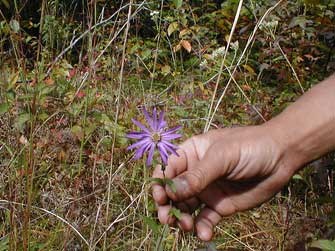
NPS Photo
Kings Mountain is a rocky spur of the Blue Ridge Mountains that rises 46 meters (151 feet) above the surrounding area. In 1780, British Major Patrick Ferguson and his loyalist militia were severely defeated by a small band of patriot forces, turning the tide on England's attempt to conquer the South. Topographically, Kings Mountain National Military Park is characterized by a series of ridges that generally run from southwest to northeast. On mesic and dry-mesic slopes, overstories contain white oak, red maple, and tulip poplar, and understories contain large components of flowering dogwood. Typical dry-site species include chestnut oak, scarlet oak, and shortleaf pine, with post oak and blackjack oak also common.
The Cumberland Piedmont Network I&M program has provided this park with a vegetation community classification and map, a wetlands inventory, and updated vascular plant and vertebrate species lists. During the vegetation community classification work, 27 distinct associations were documented and mapped, including interesting chestnut oak-blackjack oak woodland.
The network monitoring program at this park includes four vital signs that involve repeated visits to established sites, following procedures established by each monitoring protocol. These four vital signs are: forest vegetation communities, invasive species early detection, ozone/foliar injury, and water quality. Water quality monitoring began in 2003 and continues on a bi-monthly schedule every-other-year (odd years) at seven sites. Forest monitoring began in 2011–2012 with the establishment of 16 long-term monitoring plots. More new plots will be established in upcoming years, followed by a five-year revisit schedule, occurring in late June. Ozone levels and foliar injury are assessed on-site every six years, beginning in 2013. The Invasive Species Early Detection protocol was completed in 2012 and will be used by field crews to monitor for priority exotics during their scheduled field work.
Park managers are using inventory and monitoring data to create resource stewardship strategies for achieving desired future conditions. The links to inventory and monitoring reports are provided on this page.
For more Information contact:
Steve Thomas, Network Program Manager, CUPN offices at Mammoth Cave NP
Select a Park:
Select a Species Category (optional):
Visit NPSpecies for more comprehensive information and advanced search capability. Have a suggestion or comment on this list? Let us know.
Last updated: January 12, 2021
